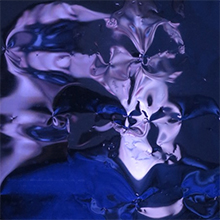Equipped at the start of the performance with a range of body-based sensors (heartrate, respiration, skin conductance, EEG, electrical signals from the muscles), the performer moves through a range of intense tasks, transferring their physiological response into the crowd via light, sound and worn haptic devices.
The emotional response to these changes is captured by the sensors and converted in stimulation to the audience that can be either simultaneous or spread across the group like a wave. Over the course of the performance, a minimalistic composition of light and sound unfolds with unpredictable moods, from very subtle and liminal to saturated flashes and noises. The performer and audience thus becomes the test subject of a mass experiment in visual and aural stimulation aimed at provoking subtle or bold sensations captured by the sensors and diffused across bodies – a new form of sensation at a distance.

 more about DISPLACE / M.O.S.
more about DISPLACE / M.O.S.
 download dossier
download dossier
 play
play
 download dossier
download dossier
 download infoFlyer
download infoFlyer
 leerraum [ ] >
leerraum [ ] >
 download dossier
download dossier
 LINE
LINE

